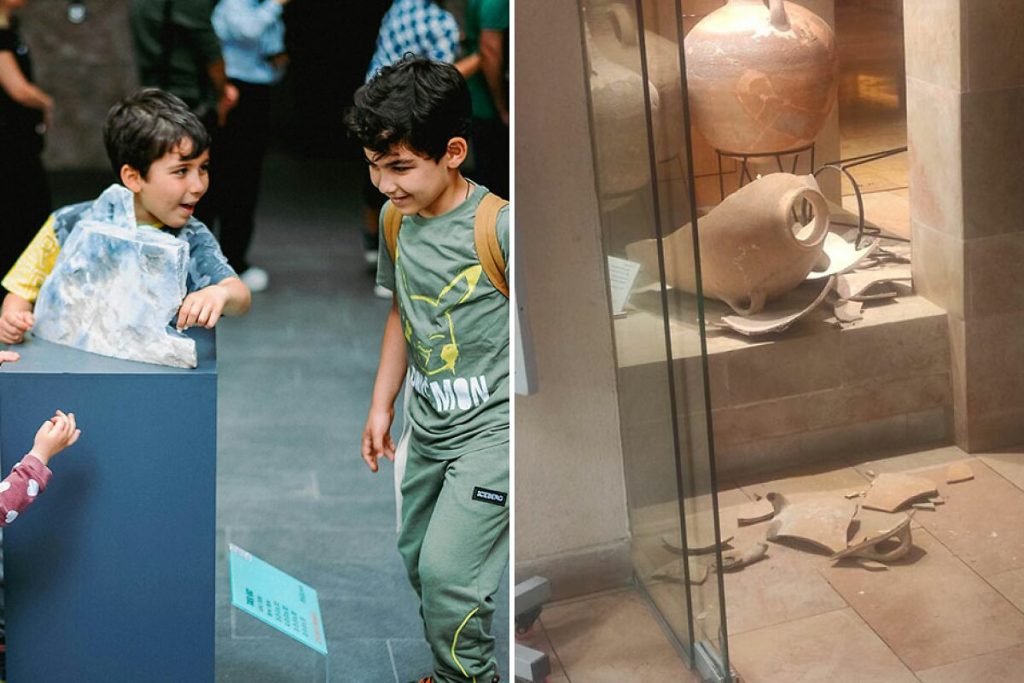Boy accidentally smashes 3,500-year-old jar on museum
3 min read

During a recent visit to the Hecht Museum in Haifa, Israel, a young boy inadvertently shattered a jar that had been a centerpiece of the museum’s collection. The jar, dating back 3,500 years to the Bronze Age, was a remarkably intact artifact, and its loss has prompted a response from the museum.
The jar, which was on display near the museum entrance, belonged to a rare collection of Bronze Age pottery. It was displayed without protective glass, a decision by the museum based on their philosophy of presenting archaeological artifacts in a manner that highlights their “special charm” and enhances visitor engagement.
According to a statement from the Hecht Museum, the incident occurred when the boy, estimated to be around four or five years old, accidentally knocked over the jar. Lihi Laszlo, a representative from the museum, clarified that while such events are taken seriously, this case was purely accidental. “There are instances where display items are intentionally damaged, and those cases are treated with great severity, including involving the police,” Laszlo explained. “In this case, however, the jar was accidentally damaged by a young child, and our response will be appropriate to In response to the mishap, the museum has arranged for the family to return for a special tour, emphasizing that the incident was not viewed with punitive intent but as an unfortunate accident. The museum has also enlisted a conservation specialist to restore the jar, with plans to return it to its display spot once the restoration is complete.

Despite this rare incident, the Hecht Museum remains committed to its policy of displaying items without barriers or glass walls whenever feasible. The museum’s staff has assured the public that this approach will continue, as it aligns with their mission to provide an immersive and unobstructed experience for visitors.
The jar, an artifact from the Canaan region on the eastern Mediterranean coast, was originally used to store local supplies like wine and olive oil. It predates the Biblical era of Kings David and Solomon and is notable for its well-preserved condition. Artifacts from this period are often found broken or incomplete, making the intact jar a significant find when it was first discovered.
The Hecht Museum, located within the grounds of the University of Haifa, is known for its collection of archaeological and art treasures. The museum’s approach to displaying artifacts reflects its dedication to educational and interactive experiences, despite the occasional risks involved.

The accident has sparked a broader discussion about museum display practices and the balance between accessibility and preservation. The Hecht Museum’s decision to continue showcasing items without glass barriers highlights their commitment to making history tangible and engaging for visitors, even as they navigate the challenges that come with such an approach.
Overall, while the loss of the jar is a setback, the museum’s response underscores their dedication to both preserving and sharing their valuable collections with the public. The Hecht Museum remains a vital institution for archaeological and cultural education, continuing to offer a unique glimpse into the past while adapting to the realities of museum curation.